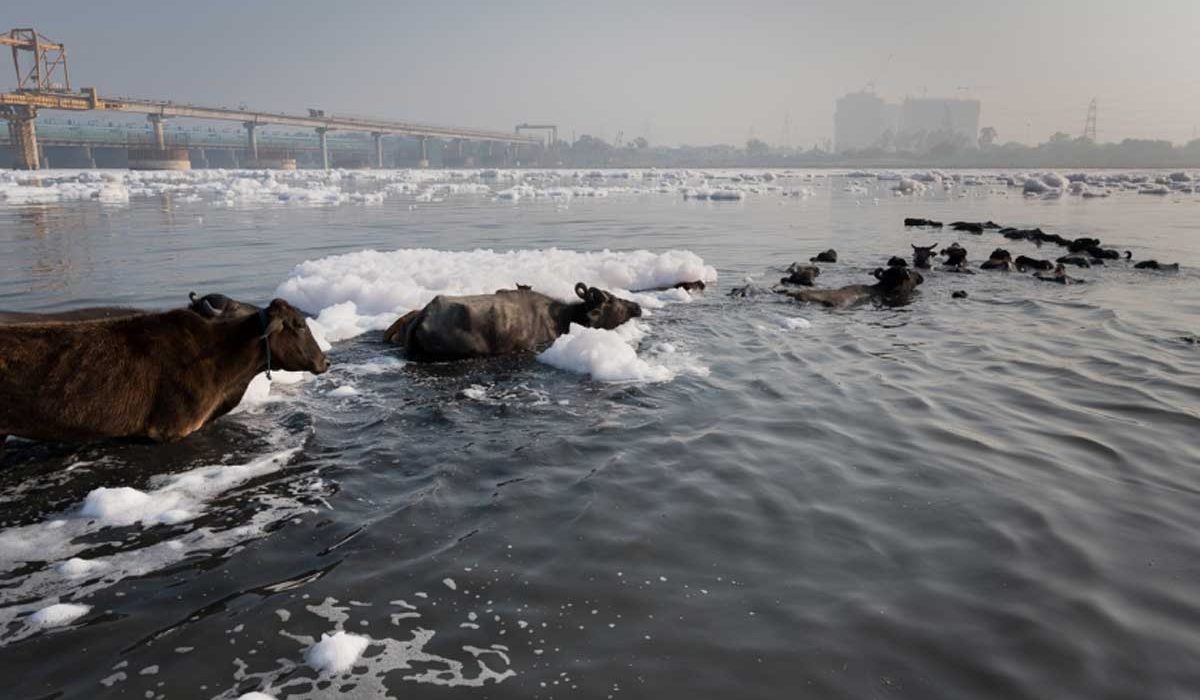In the quest to tackle Delhi’s water pollution crisis, a significant stride was made when the government unveiled its ambitious plan to process 95 per cent of the city’s wastewater by the close of 2022. This initiative, aligned with efforts to curb pollution in the Yamuna river, was heralded as a pivotal step towards environmental sustainability. However, recent findings by the United Nations Environment Programme (UNEP) shed light on a sobering reality: a staggering 80 per cent of water supplied to households in Delhi ultimately ends up as wastewater, underscoring the urgency for more effective water management strategies in the capital city, home to an estimated population of 30 million.
The UNEP’s latest report marks a watershed moment, as it delves into a comprehensive study aimed at exploring avenues for enhancing water recycling efficiency in Delhi, a first-of-its-kind endeavor. Central to this study was an evaluation of various technologies employed by sewage treatment plants for nutrient recovery and safe wastewater reuse. Among the array of processes scrutinized—including the activated sludge process (ASP), extended aeration (EA), sequential batch reactor (SBR), and fluidized aerobic bed reactor (FAB)—one standout solution emerged: the Moving Bed Biofilm Reactor (MBBR), a system with roots in Norway.
The MBBR system, distinguished by its reliance on biological methods rather than solely chemical or mechanical processes, has shown remarkable efficacy in treating wastewater. However, as Sangeeta Bansal, a lead researcher on the project, cautions, its widespread adoption for large sewage treatment plants poses challenges, notably in terms of maintenance costs. Nonetheless, for such facilities, alternative systems like SBR and ASP have proven to be viable alternatives, offering effective solutions to Delhi’s pressing wastewater treatment needs.
Exploring Applications of Treated Wastewater
Treated wastewater holds immense potential for a range of non-potable applications, serving as a valuable resource in various sectors. According to Riccardo Zennaro, a Programme Management Officer for wastewater at UNEP, potential uses include toilet flushing, construction, agriculture, car washing, and even the rejuvenation of affected rivers and lakes. This underscores the versatility and value of treated wastewater as a sustainable solution to address water scarcity and pollution concerns.
Beyond Yamuna: The Ripple Effects of Pollution
While much attention has been focused on the pollution plaguing the Yamuna river, the UNEP report serves as a stark reminder that Delhi’s water pollution crisis extends beyond its iconic waterway. Disturbingly, since 2011, pollution-induced expansion has seen lake areas increase by eight per cent—a testament to the far-reaching consequences of unchecked pollution. This broader perspective underscores the imperative for holistic approaches to water management and pollution mitigation efforts, transcending individual water bodies to safeguard the collective well-being of Delhi’s environment and populace.
Challenges and Opportunities Ahead
As Delhi grapples with its water pollution crisis, the journey towards sustainable solutions is fraught with challenges yet brimming with opportunities. The adoption of innovative technologies such as the MBBR system offers promising avenues for improving wastewater treatment efficiency, albeit with accompanying hurdles. From escalating maintenance costs to the need for infrastructural upgrades, navigating these challenges demands concerted efforts from stakeholders across sectors.
Moreover, the imperative to expand the scope of wastewater reuse and explore novel applications underscores the need for multifaceted strategies. Collaborative partnerships between government agencies, research institutions, and private enterprises are pivotal in driving innovation and scaling up sustainable water management practices.
Charting a Sustainable Future
In charting a path towards a sustainable future, informed by the insights gleaned from the UNEP report, Delhi stands at a critical juncture. Embracing a holistic approach that encompasses technological innovation, policy reforms, and community engagement is paramount. By harnessing the transformative potential of solutions like the MBBR system and leveraging treated wastewater for diverse applications, Delhi can turn the tide on its water pollution crisis while fostering resilience and prosperity for generations to come.
Conclusion
The UN’s findings underscore the urgent need for concerted action to address Delhi’s water pollution crisis. By embracing innovative solutions and forging collaborative partnerships, the city can embark on a path towards environmental sustainability and resilience. From enhancing wastewater treatment efficiency to exploring diverse applications for treated wastewater, opportunities abound for Delhi to chart a course towards a cleaner, healthier future. As the city navigates the challenges ahead, collective resolve and strategic investments will be crucial in realizing this vision of a more sustainable and prosperous Delhi.

